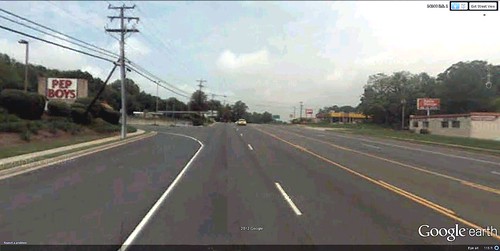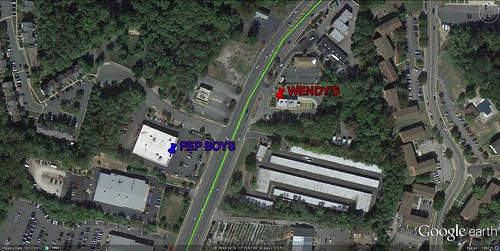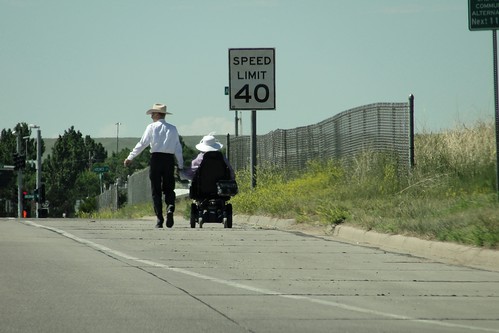"William H.(Holly) Whyte (1917-1999) is considered the mentor for
Project for Public Spaces because of his seminal work in the study of
human behavior in urban settings. While working with the New York City
Planning Commission in 1969, Whyte began to wonder how newly planned
city spaces were actually working out – something that no one had
previously researched. This curiosity led to the Street Life Project, a
pioneering study of pedestrian behavior and city dynamics.
PPS founder and president Fred Kent worked as one of Whyte’s research
assistants on the Street Life Project, conducting observations and film
analyses of corporate plazas, urban streets, parks and other open
spaces in New York City. When Kent founded PPS shortly thereafter, he
based the organization largely on Whyte’s methods and findings. More
than anything, Whyte believed in the perseverance and sanctity of public
spaces. For him, small urban places are “priceless,” and the city
street is “the river of life…where we come together.” Whyte’s ideas are
as relevant today as they were over 30 years ago, and perhaps even more
so.
“Whyte’s work remains a living and usable handbook for improving our cities, our countryside, and our lives.”
– Nathan Glazer, Wilson Quarterly
“Holly always believed that the greatest lesson the city has to
offer us is the idea that we are all in it together, for better or for
worse, and we have to make it work.”
– Paul Goldberger, Architecture
Biography
Whyte was born in West Chester, Pennsylvania in 1917. He joined the
staff of Fortune magazine in 1946, after graduating from Princeton
University and serving in the Marine Corps. His book The Organization Man (1956),
based on his articles about corporate culture and the suburban middle
class, sold more than two million copies. Whyte then turned to the
topics of sprawl and urban revitalization, and began a distinguished
career as a sage of sane development and an advocate of cities.
In 1969 Whyte assisted the New York City Planning Commission in
drafting a comprehensive plan for the city. Having been critically
involved in the planning of new city spaces, he came to wonder how these
spaces were actually working out. No one had researched this
before. He applied for and received a grant to study the street life in
New York and other cities in what became known as the Street Life
Project. With a group of young research assistants, and camera and
notebook in hand, he conducted pioneering studies on pedestrian behavior
and breakthrough research on city dynamics.
All told, Whyte walked the city streets for more than 16 years. As
unobtrusively as possible, he watched people and used time-lapse
photography to chart the meanderings of pedestrians. What emerged
through his intuitive analysis is an extremely human, often amusing view
of what is staggeringly obvious about people’s behavior in public
spaces, but seemingly invisible to the inobservant.
The core of Whyte’s work was predicated on the years he spent
directly observing human beings, and he authored several texts about
urban planning and design and human behavior in various urban spaces.
Whyte served as an advisor to Laurence S. Rockefeller on environmental
issues and as a key planning consultant for major U.S. cities, traveling
and lecturing widely. He was a Distinguished Professor at Hunter
College of the City University of New York. He was a trustee of the
American Conservation Association, and was active in the Municipal Art
Society, the Hudson River Valley Commission and President Lyndon B.
Johnson’s Task Force on Natural Beauty.
Perspectives
The Social Life of Public Spaces
Whyte wrote that the social life in public spaces contributes
fundamentally to the quality of life of individuals and society. He
suggested that we have a moral responsibility to create physical places
that facilitate civic engagement and community interaction.
Bottom-Up Place Design
Whyte advocated for a new way of designing public spaces – one that
was bottom-up, not top-down. Using his approach, design should start
with a thorough understanding of the way people use spaces, and the way
they would like to use spaces. Whyte noted that people vote with their
feet – they use spaces that are easy to use, that are comfortable. They
don’t use the spaces that are not.
The Power of Observation
Whyte suggested that through observation and by talking to people, we
can learn a great deal about what people want in public spaces and can
put this knowledge to work in creating places that shape livable
communities. We should therefore enter spaces without theoretical or
aesthetical biases, and “look hard, with a clean, clear mind, and then
look again – and believe what you see.”
Quotable
“What attracts people most, it would appear, is other people.”
“One felicity leads to another. Good places tend to be all of a piece
– and the reason can almost always be traced to a human being.”
“It is difficult to design a space that will not attract people. What is remarkable is how often this has been accomplished.”
“We are not hapless beings caught in the grip of forces we can do
little about, and wholesale damnations of our society only lend a
further mystique to organization. Organization has been made by man; it
can be changed by man.”
“The street is the river of life of the city, the place where we come together, the pathway to the center.”
“If there’s a lesson in streetwatching it is that people do like
basics — and as environments go, a street that is open to the sky and
filled with people and life is a splendid place to be.”
“The human backside is a dimension architects seem to have forgotten.”
“Up to seven people per foot of walkway a minute is a nice bustle”
“There is a rash of studies underway designed to uncover the bad
consequences of overcrowding. This is all very well as far as it goes,
but it only goes in one direction. What about undercrowding? The
researchers would be a lot more objective if they paid as much attention
to the possible effects on people of relative isolation and lack of
propinquity. Maybe some of those rats they study get lonely too.”
“So-called ‘undesirables’ are not the problem. It is the measures taken to combat them that is the problem.”
“I end then in praise of small spaces. The multiplier effect is
tremendous. It is not just the number of people using them, but the
larger number who pass by and enjoy them vicariously, or even the larger
number who feel better about the city center for knowledge of them. For
a city, such places are priceless, whatever the cost. They are built of
a set of basics and they are right in front of our noses. If we will
look.”
Fonte e imagem: http://www.pps.org/reference/wwhyte/
















